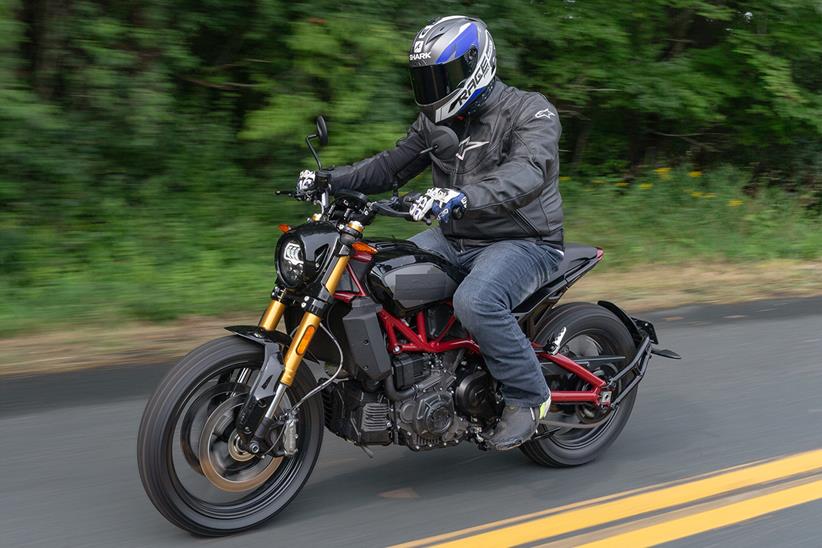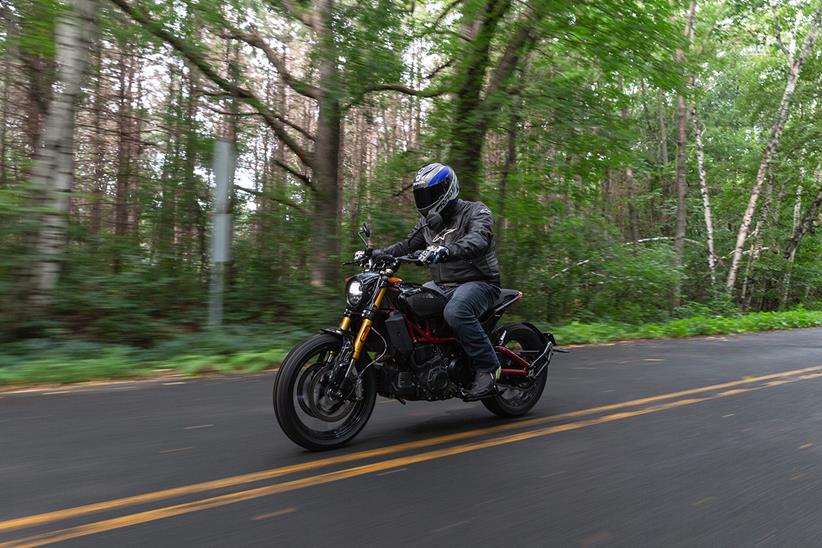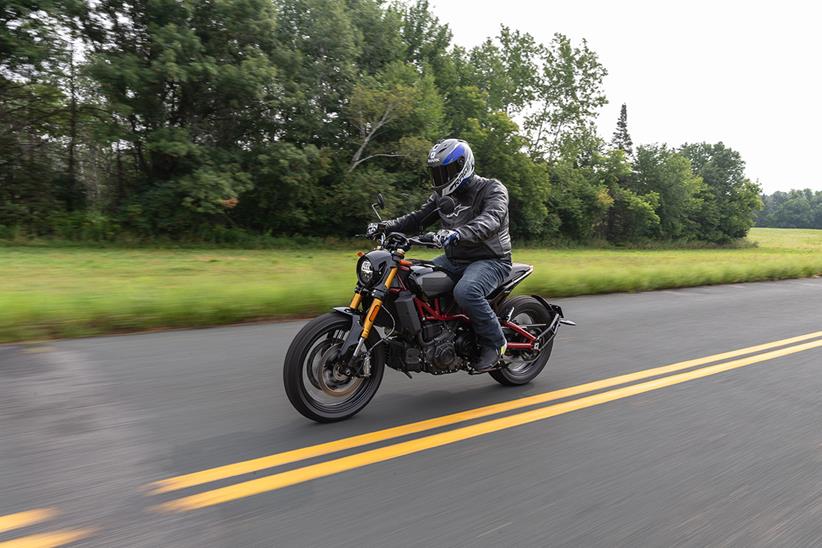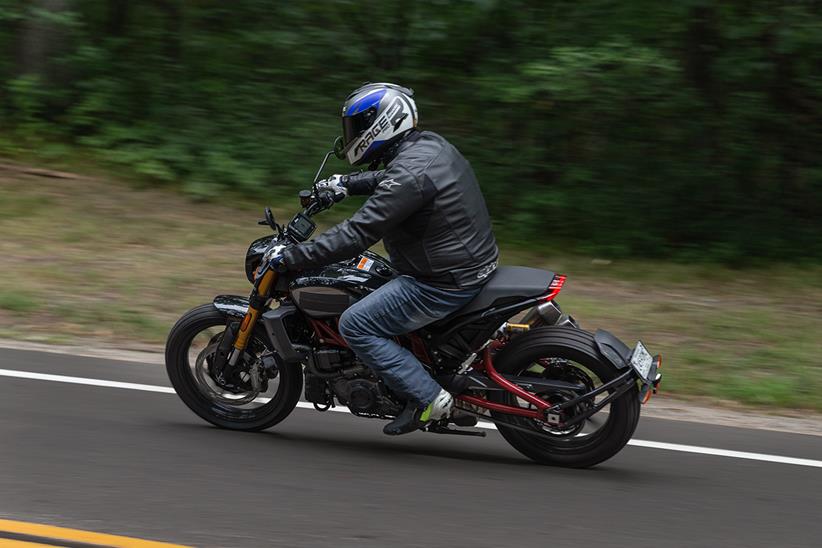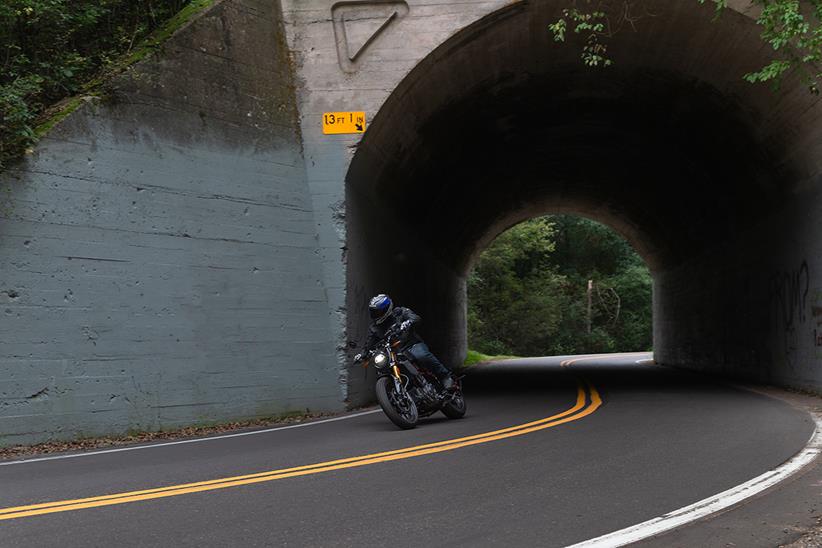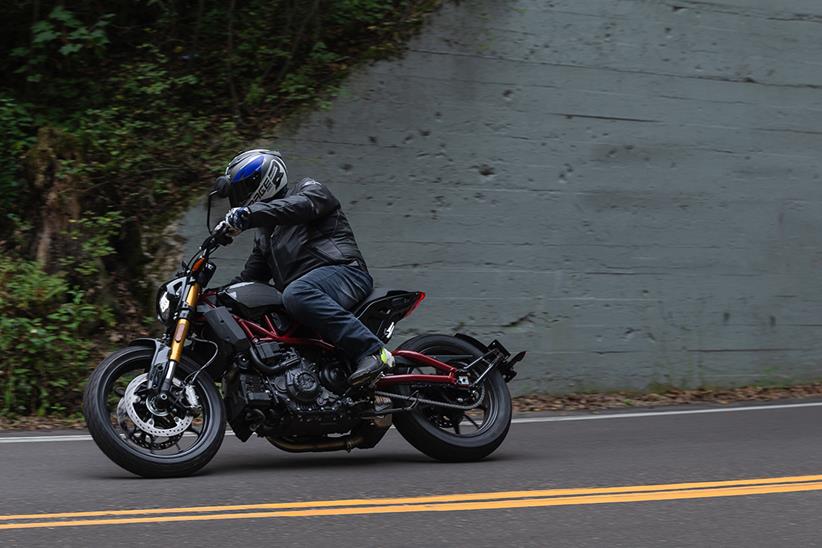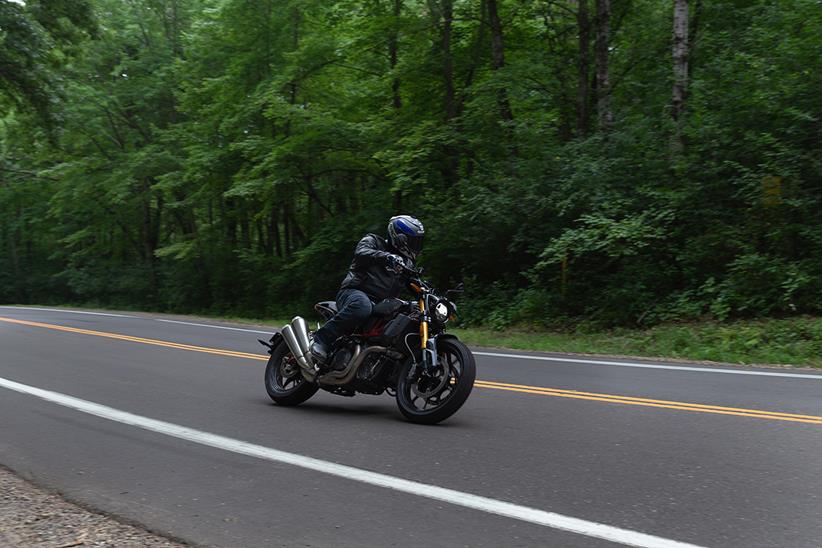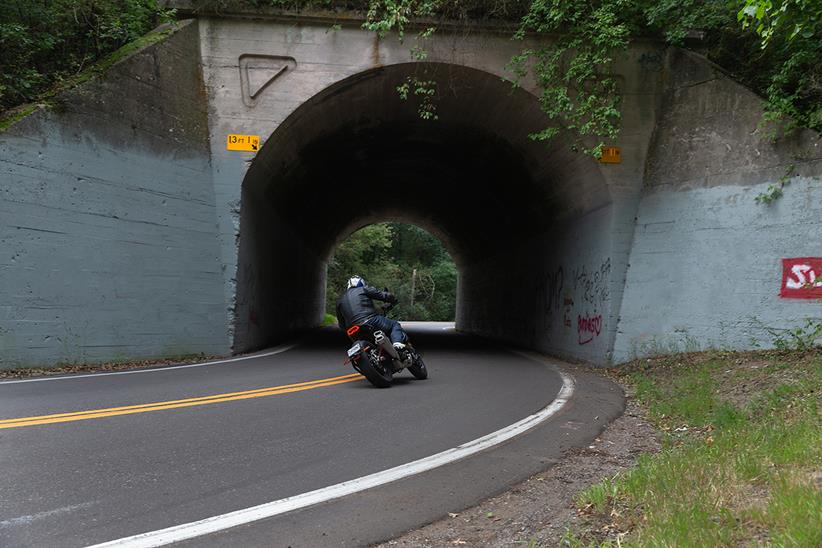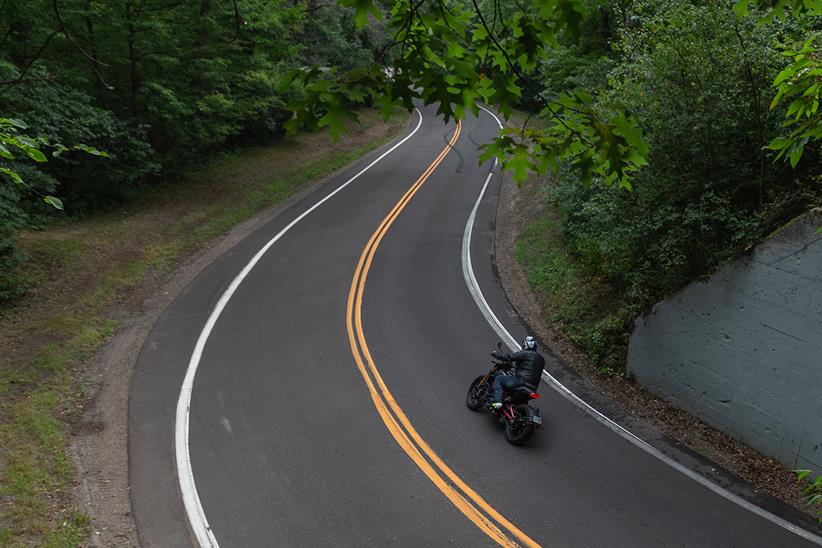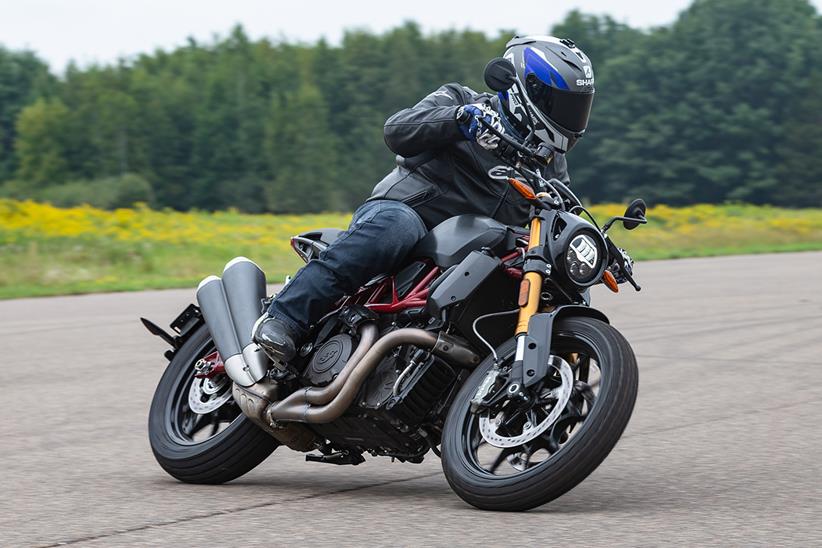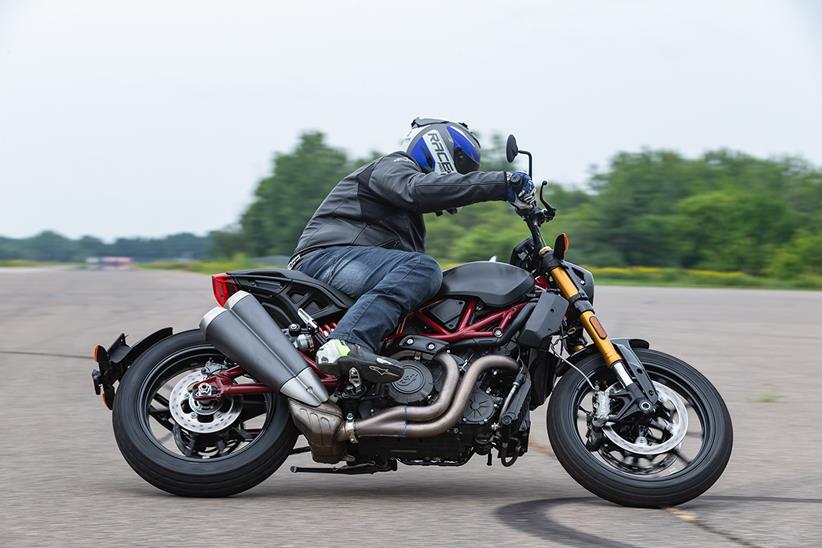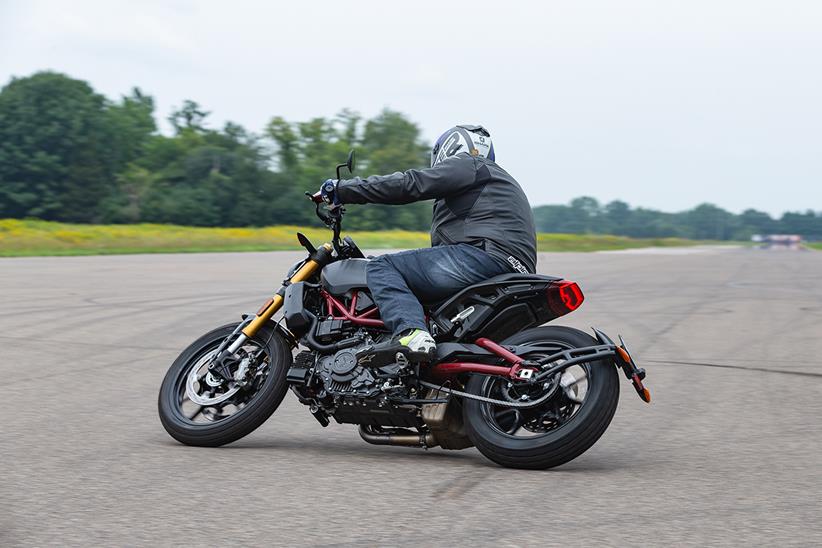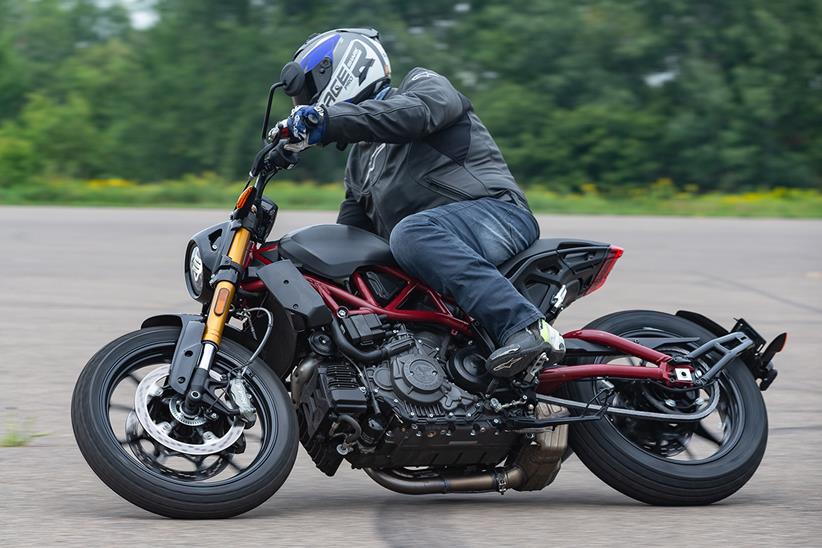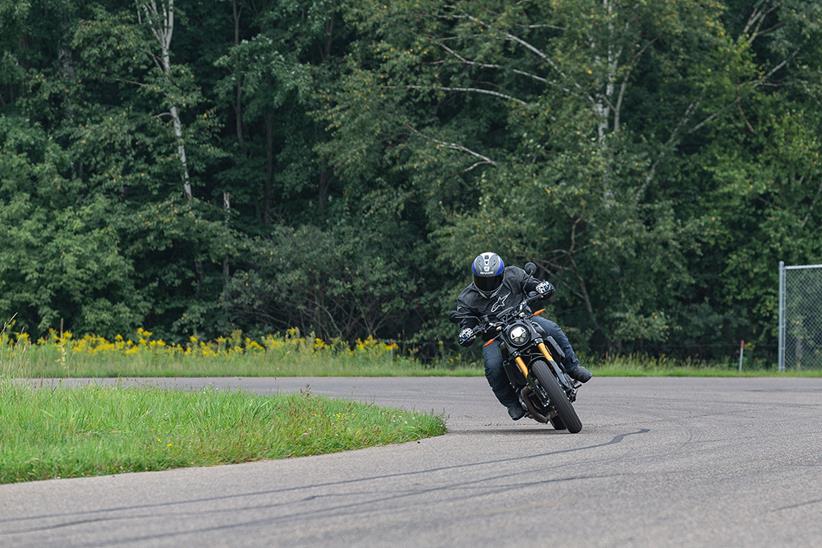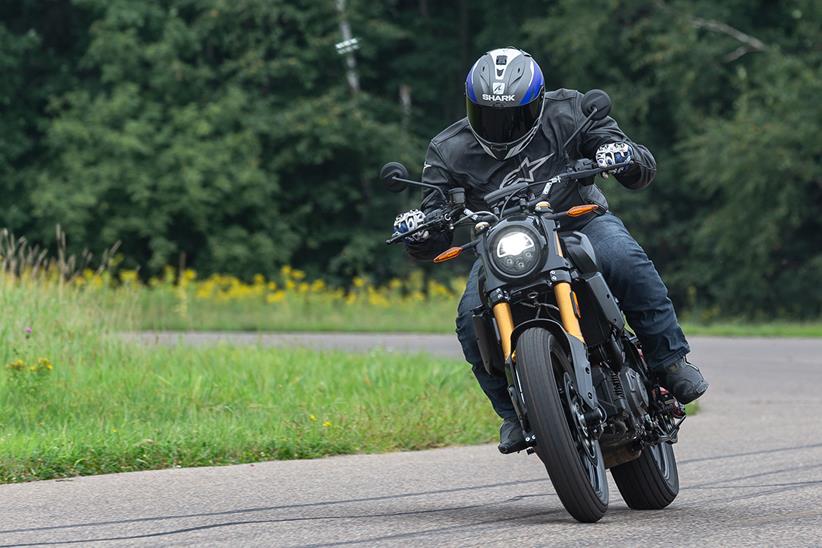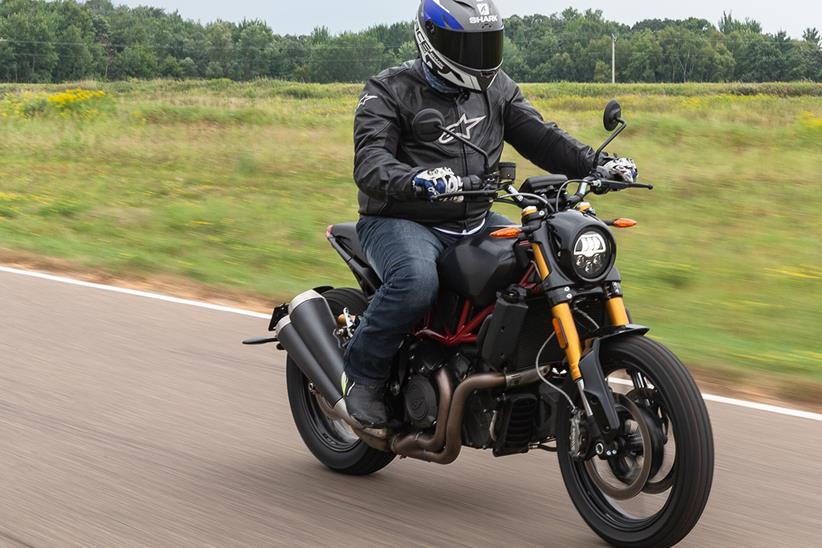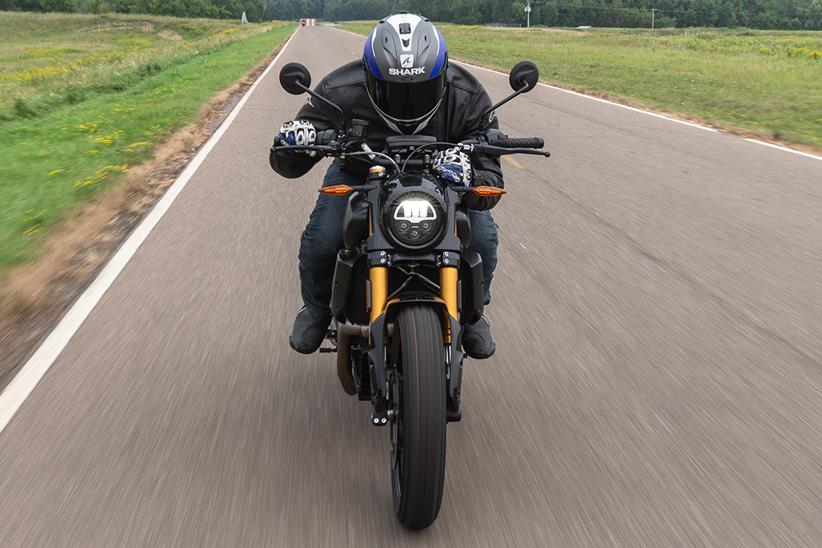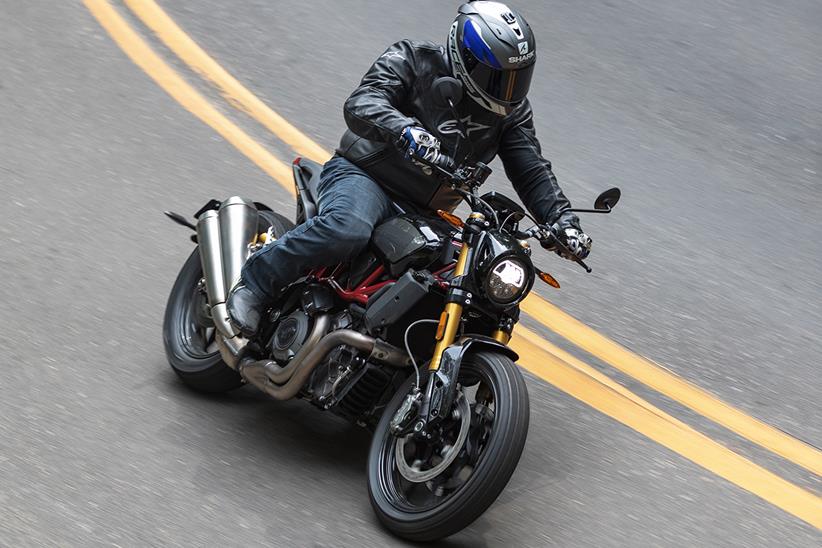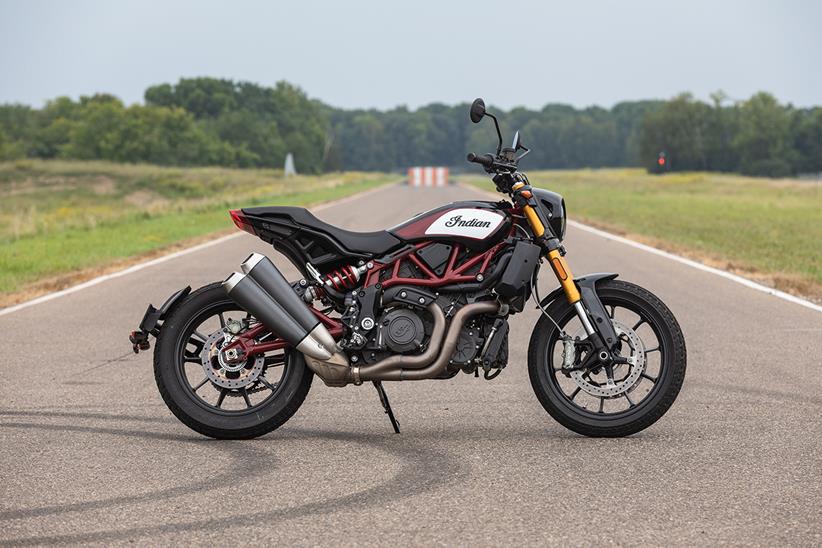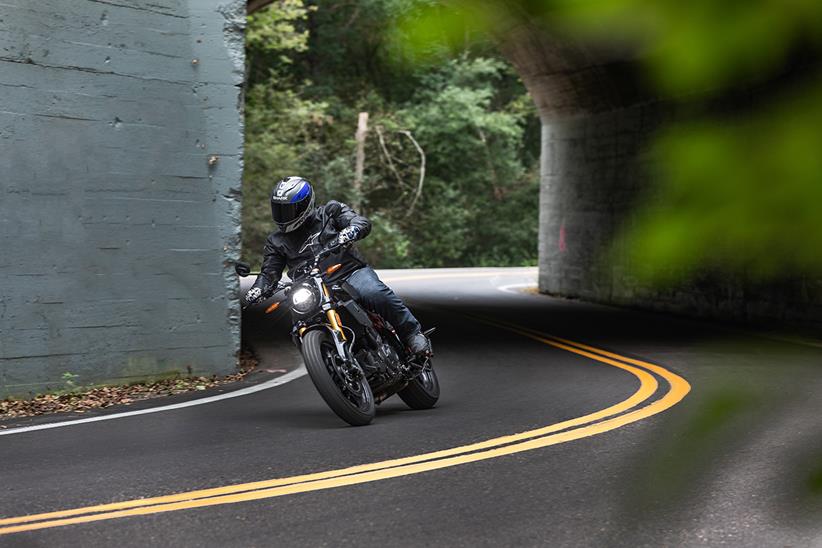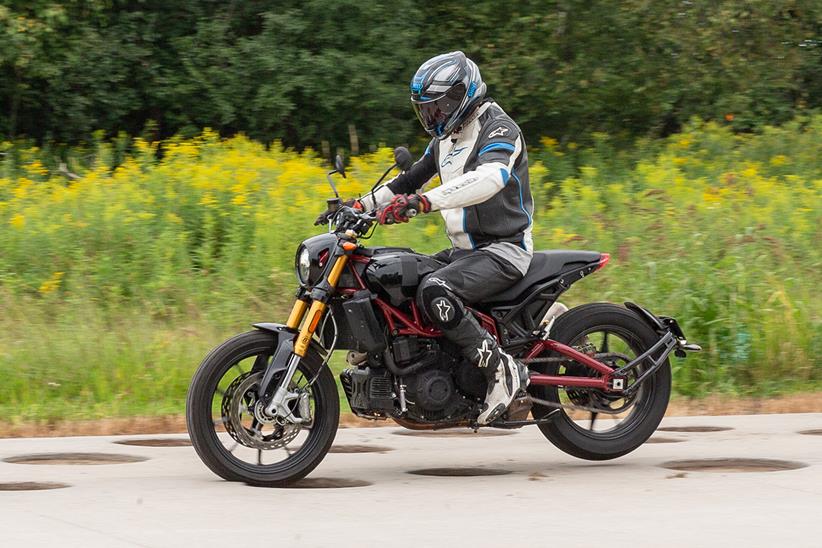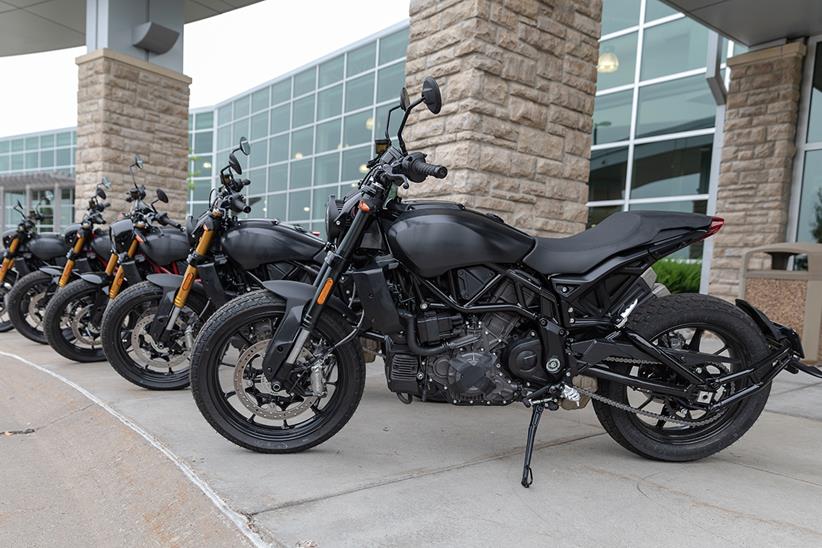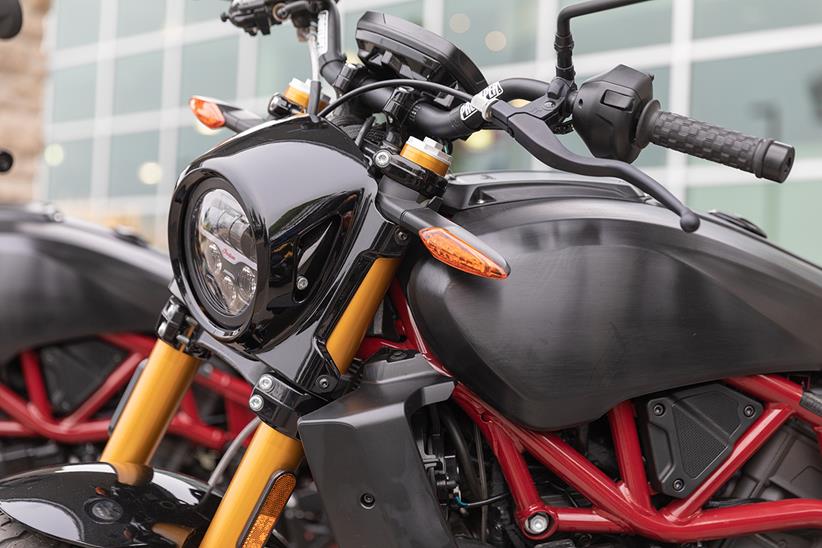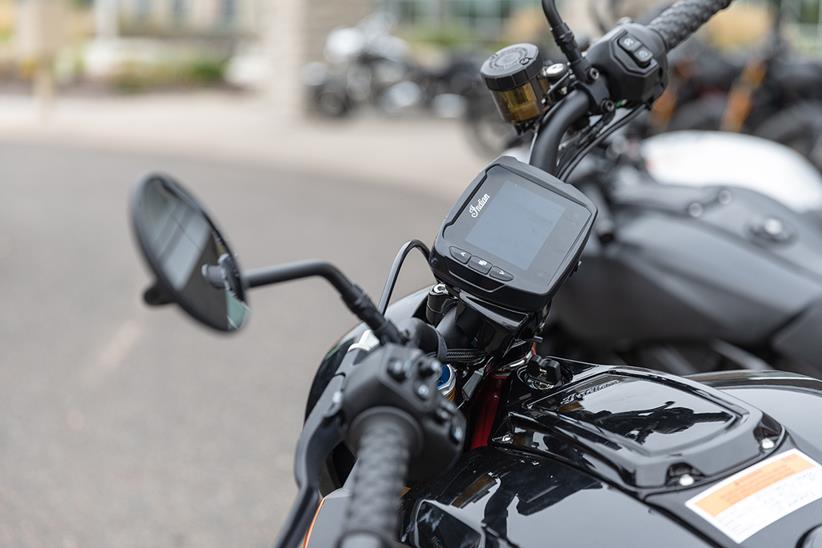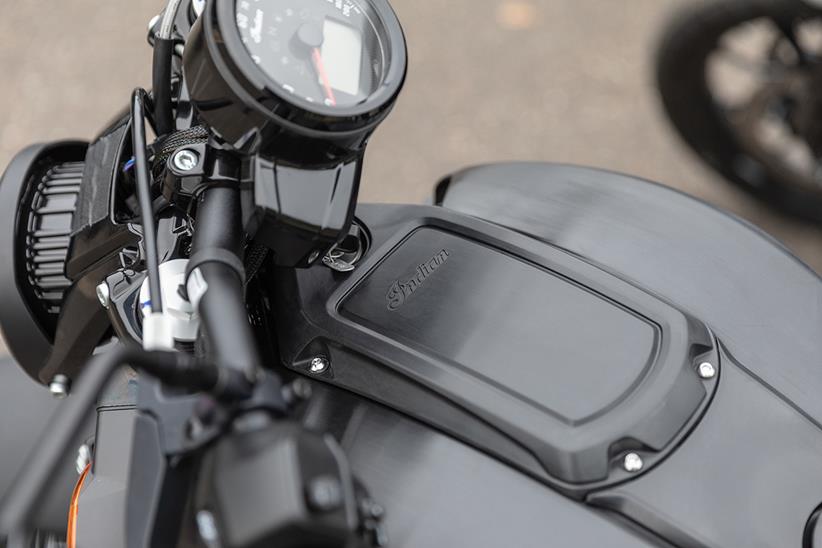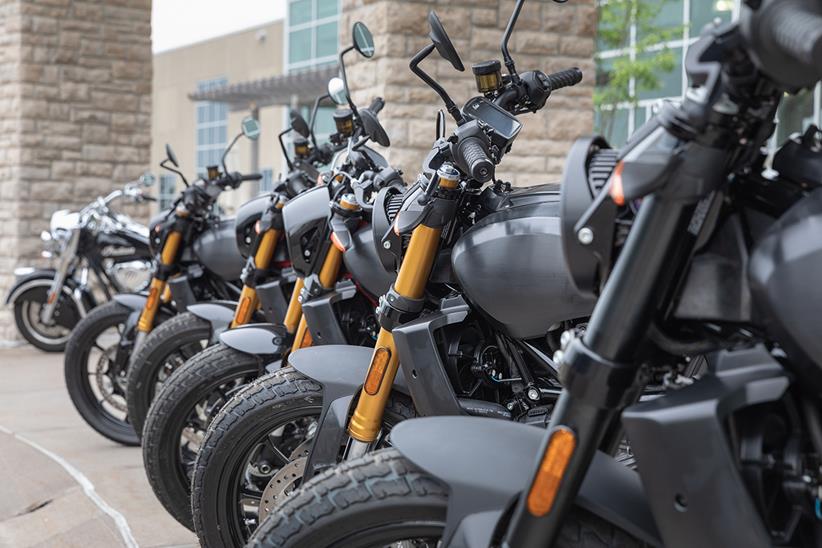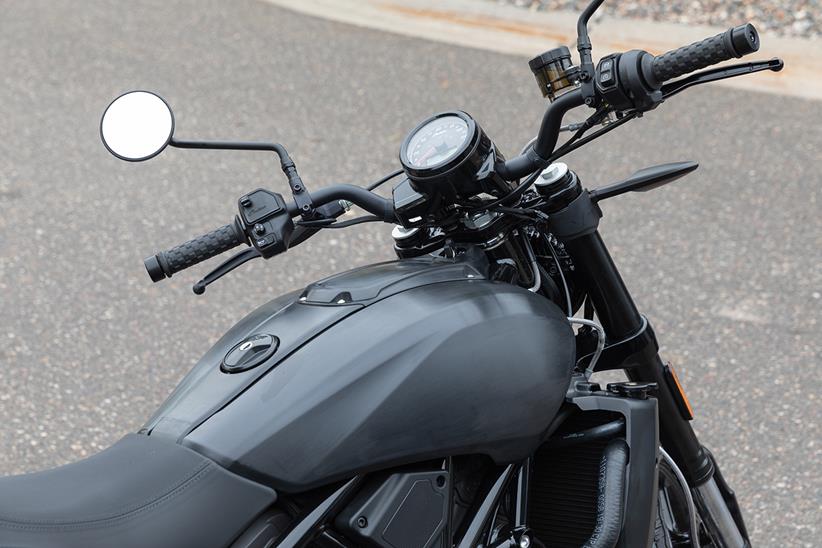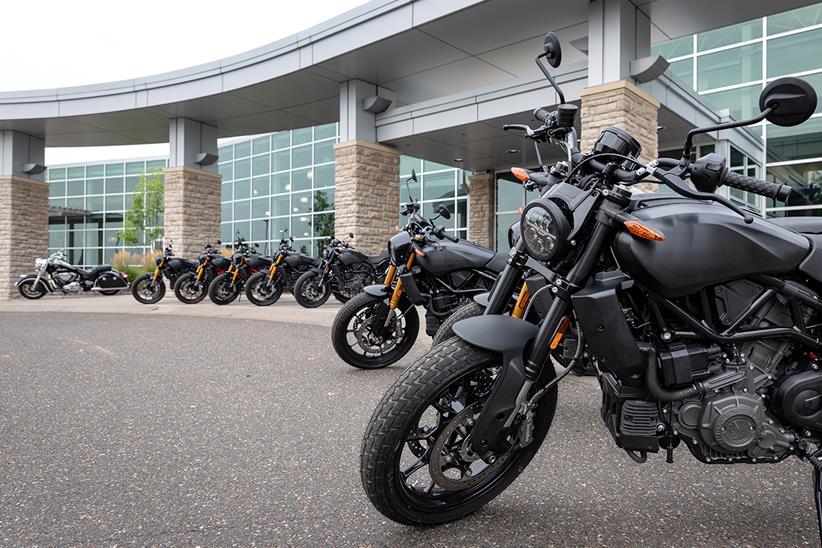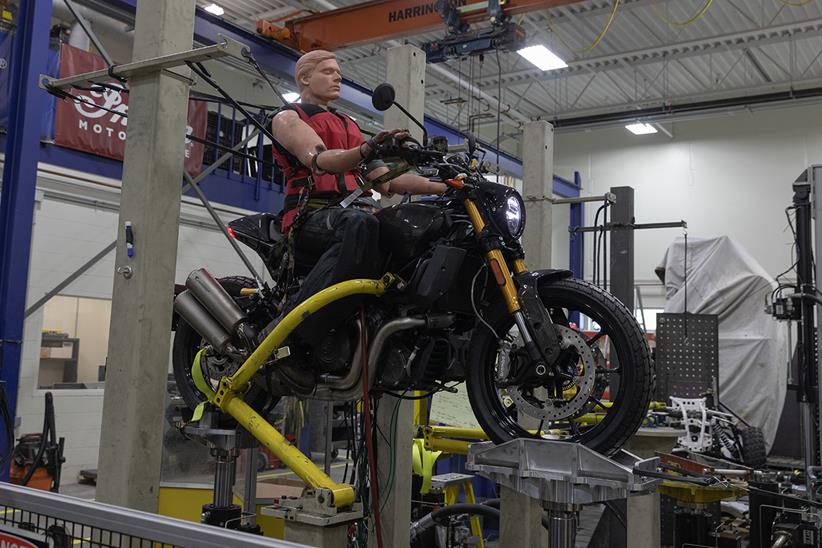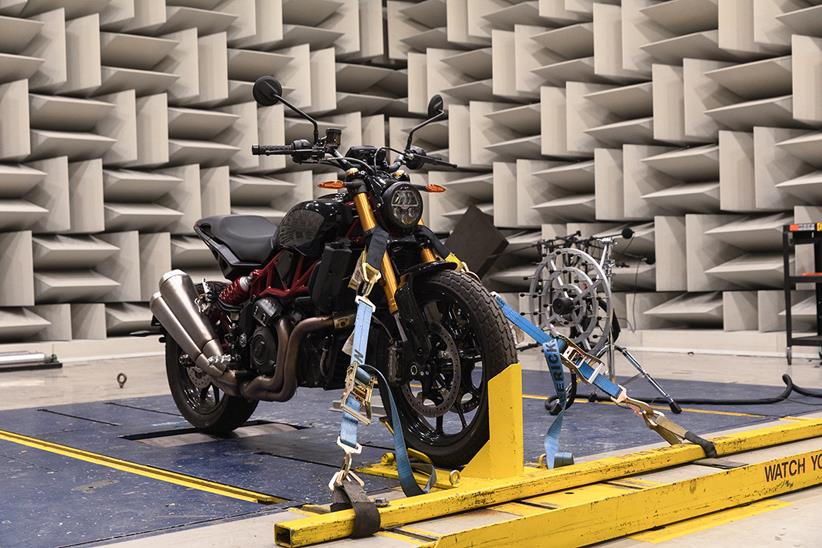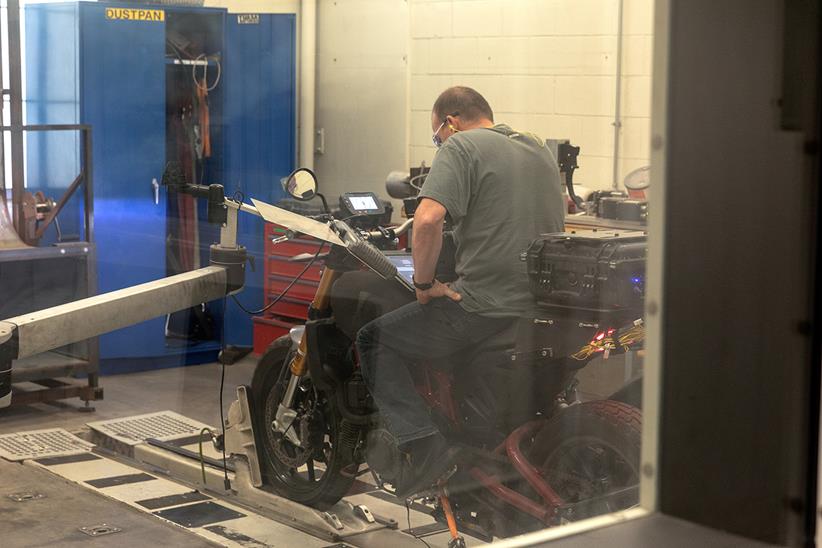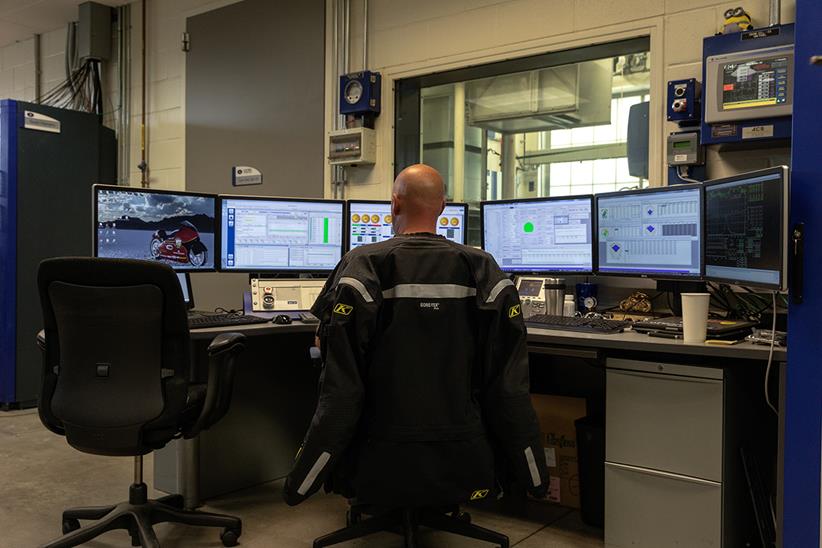Exclusive: Indian FTR1200S prototype ridden
After a year of teasing, Indian’s all-new 2019 production FTR1200 has finally been unveiled to the public at the Cologne show, converting much of the promise from the FTR1200 Concept of twelve months ago into an attractive road-going flat-tracker. That boldly aggressive concept may inevitably have been watered down for the production bike, but a recent visit to the Indian factory in Wyoming, Minnesota proved that the FTR is still very much the real deal.
- Related: 2021 Indian FTR review
As Senior International Product Manager, Ben Lindaman whipped the covers off one of the final-stage pre-production bikes at our private factory viewing he succinctly encapsulated the difference between the FTR750 racer and 1200 Concept, and the production bike soon to be available in dealers. “Born on the track, built for the road” was, he said, the mantra that underpinned the whole project, from the first FTR750 race bike that we saw at the factory two years ago – which has gone on to decimate the competition in the American Flat Track Championship – through to the all-new FTR1200 road bike.
Available as two distinct models for 2019, the base FTR1200 is likely to appeal to custom builders, hooligan racers and those for whom budget has to curtail aspiration – while the top-spec FTR1200S represents a serious assault on the well-established naked retro sector.
So where does the FTR1200S fit in?
Without direct flat-track inspired competition, it could be argued that the FTR has no competition, but there’s so much more to this bike than its dirt oval origins. While it may define the FTR’s looks and attitude, it certainly doesn’t define its limitations. The 1203cc V-twin (that shares much of its architecture with the Scout but which was extensively redesigned for the FTR) is kicking out a claimed 120bhp, and with rider modes, traction control, cornering ABS, multimedia connected colour dash, fully adjustable suspension, a racing pedigree and lashings of character, the FTR could prove a serious headache for the established competition. Triumph’s Bonneville and imminent Scrambler 1200, and Ducati’s Monsters and Scrambler 1100s have particular cause for concern.
What’s FTR1200S prototype like to ride?
It’s rare that any manufacturer will even show the press a test-mule, let alone allow it to be ridden. But Indian have been gulping down the brave pills of late, and handed us the keys to both base and S models for some spirited riding on the back roads of Wyoming and at their private test strip inside the 620-acre R&D facility where the FTR was created. And it was a revelation.
The most striking immediate impressions were all focused on what the FTR is not. Despite the fact that the bikes were genuine development mules, not weakly disguised production bikes, and boasted long lists of unfinished and unrefined elements – it was immediately apparent that Indian haven’t surrendered the FTR to its track roots. From the moment you release the light clutch and feel the surging drive build as you dance through the precise gearbox and revel in the exhaust note, it’s obvious that the FTR is every bit a street bike.
The riding position for my 5ft11in frame is superbly commanding. The bars are set wide enough that it feels aggressive without hindering filtering, the seat surprisingly comfortable and well placed back from the bars, and the footpegs in a refreshingly rearset position – allowing you to ride with intent, rather than feeling like your feet are awkwardly far forward. That oh-so-natural balance means that even after several hours in the saddle neither wrists, feet nor backside can claim to be more stressed than each other. And with enforced fuel stops arriving every 120 miles or thereabouts from the 13-litre tank, this is an all-day comfortable bike.
Of course, that’s not its intent. The FTR is about refined street hooliganism. It feels solid and dense without ever feeling as heavy as its claimed 222kgs, its mass giving it stability and inspiring confidence, but never getting in the way. It changes direction as fast and hard as you dare use the bar leverage, or trust the bespoke Dunlop DT3-R tyres. They’re actually pretty good, too. On warm dry asphalt they offer stability and confidence all the way to the end of the decent ground clearance, when the footpegs eventually scrape with no other hints of drama. Dunlop shallowed and concentrated the block pattern of their competition tyre to create the road clones, and it appears to have done the trick. The only moments of uncertainly were on greasy wet corners under the trees, where there was the slightest hint of slip.
The inherent balance in the suspension encourages you to play hard, too. With 150mm of travel at each end, and a flat composure between the fully adjustable fork and shock, there’s remarkably little pitching, and neither end feels like it’s working harder than the other.
Electronic safety net
But, with traction control, cornering ABS, anti-wheelie and three rider modes to choose from, owners will have plenty of choice for how their FTR puts the power down, and how much of an electronic safety net they want as back-up. Most will probably be more than happy just to have the most visceral settings engaged, where cheeky wheelies are allowed, along with a little bit of drift, and the full force of the engine is meted out by your own self-control.
When you do want them, the systems are all easily controlled and selected by the compact and intuitive high-definition colour dash and new switchgear. You don’t need more than 20 seconds to fathom how all the menus and systems work, and the combination of buttons and touchscreen works effortlessly together.
Righting the wrongs
As good as the test mules felt, they were riddled with problems. Many of the screen functions weren’t yet operational, the ABS wasn’t fully calibrated, and there were holes in the fuelling that you could have parked a bus in. But these were true development bikes, and you only need to ride the firm’s Scout or Chieftain ranges to have complete confidence that Indian have the skills to ensure the production bikes will be faultless.
If there was any room for disappointment, it lurks in the combination of the FTR’s weight and its slightly overly refined power delivery. That few percent too much from both lends it civility, when what we wanted was hedonism. But the overwhelming impression was of an exceptionally fun and remarkably resolved bike. For Indian’s first true foray outside the cruiser market, it’s exceptionally encouraging, and the production bikes are likely to stand head and shoulders above the test mules in every way. The proof, though, will have to wait for its launch.
This bike was built for Europe, and the fact that it’s emanated from North America appears to have done nothing to hinder its European pretensions. At £12,999 for the S (the race replica version is £13,499) it’s feels bang on the money – putting it squarely against Ducati’s Scrambler 1100 Sport. This could be one of the great success stories of 2019.
What about the base model FTR1200?
The base model gives a lot away to the top-spec S, and yet it feels barely less endearing to ride. The suspension is marginally less plush, but not so much that you instantly regret the switch. The lack of flashy colour dash, rider modes, traction control and cornering ABS all feels like more of a loss, but also somehow freeing – like riding an old bike and revelling in its simplicity. And the lack of colour options and 1kg saving aren’t things you’ll dwell on. With the same looks, the same engine delivery, wheels, exhaust and attitude, it’s no poor relation. At £11,899 it’s not a particularly cheap relation, either. For everything it hasn’t got, the base model feels £900 too expensive, or you could take the view that the S is just very good value.
Indian FTR1200S Specifications
Engine 1203cc liquid-cooled, DOHC, 4-valves per cylinder 60-degree V-twin
Power 120bhp @ 8250rpm (claimed)
Torque 85ftlbs @ 6000rpm (claimed)
Bore x Stroke 102 mm x 73.6 mm
Clutch Assist & slip, multi-plate
Compression Ratio 12.5:1
Fuel capacity 13litres
Front Suspension Fully adjustable 43mm inverted telescopic cartridge fork
Rear Suspension Fully adjustable Piggyback IFP monoshock
Weight 222kg (dry)
Rake/Trail 26.3° / 130mm
Seat Height 840mm
Front Brakes 2x 320mm discs with Brembo radial M4.32 calipers
Rear Brakes Single 265mm disc with Brembo P34 caliper
Front wheel Dunlop DT3-R 120/70 R19
Rear wheel DT3-R 150/80 R18
Colours Indian Motorcycle Red over Steel Gray, Titanium Metallic over Thunder Black Pearl, Race Replica
Indian FTR1200 Specifications
Engine 1203cc liquid-cooled, DOHC, 4-valves per cylinder 60-degree V-twin
Power 120bhp @ 8250rpm (claimed)
Torque 85ftlbs @ 6000rpm (claimed)
Bore x Stroke 102 mm x 73.6 mm
Clutch Assist & slip, multi-plate
Compression Ratio 12.5:1
Fuel capacity 13litres
Front Suspension Non-adjustable inverted telescopic cartridge fork
Rear Suspension Preload and rebound adjustable monoshock
Weight 221kg (dry)
Rake/Trail 26.3° / 130mm
Seat Height 840mm
Front Brakes 2x 320mm discs with Brembo radial M4.32 calipers
Rear Brakes Single 265mm disc with Brembo P34 caliper
Front wheel Dunlop DT3-R 120/70 R19
Rear wheel DT3-R 150/80 R18
Colours Thunder Black
